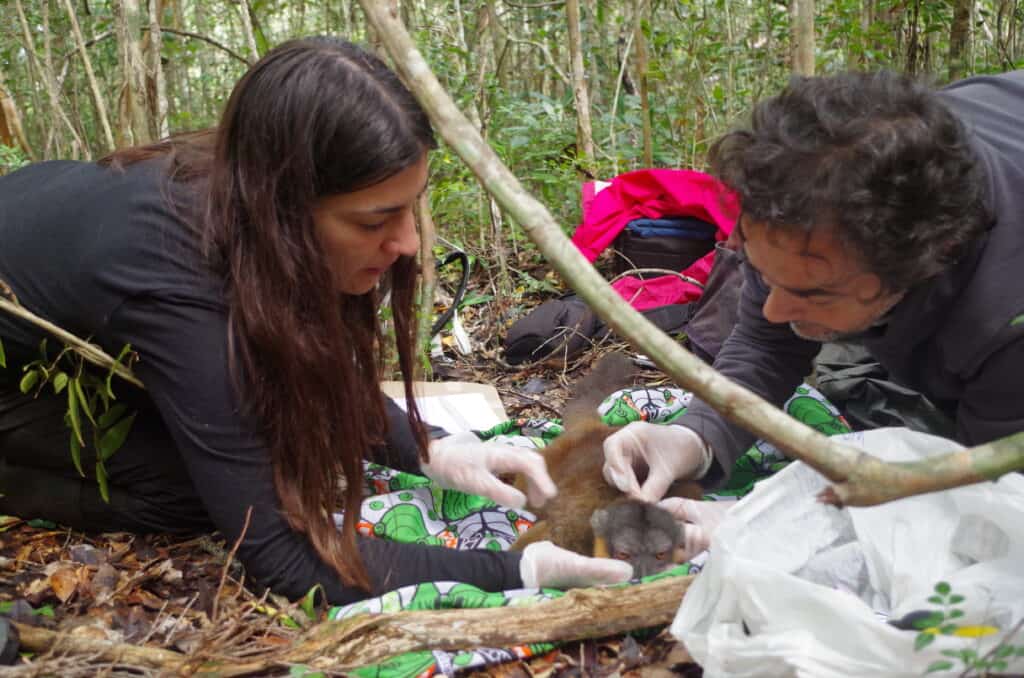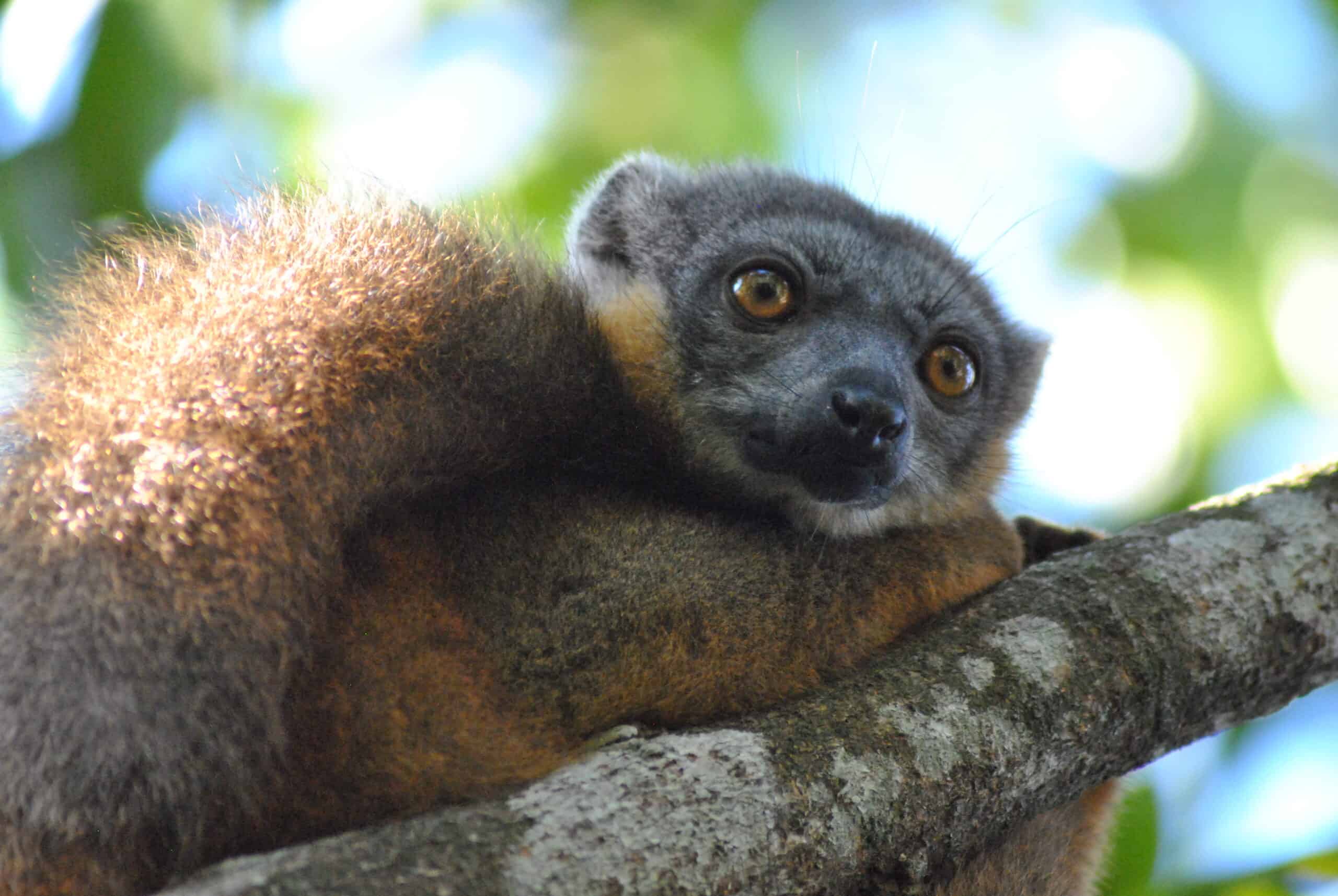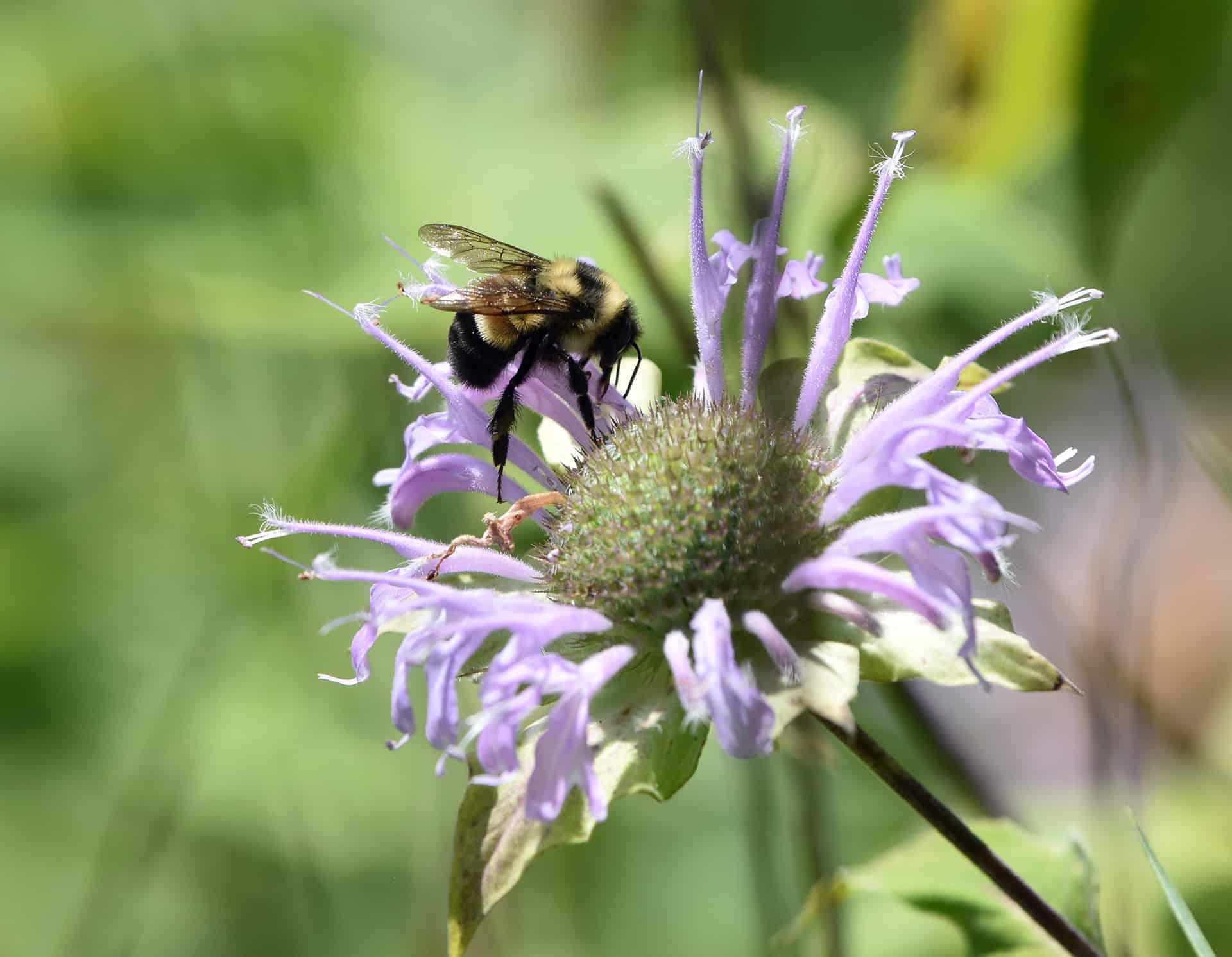Share this article
Wildlife Featured in this article
- Collared brown lemur
- Fossa
JWM: Translocated lemurs do well in new home
A population of endangered collared brown lemurs has grown two decades after reintroduction
A small population of collared brown lemurs translocated more than two decades ago appears to be doing well in its new home, despite ongoing conservation challenges.
“Collared brown lemurs are quite resilient,” said Giuseppe Donati, a professor in primatology and biological anthropology at Oxford Brookes University in the U.K. “They cope well with translocations if post-release management is provided.”
The International Union for Conservation of Nature considers collared brown lemurs (Eulemur collaris) endangered, mostly due to habitat loss—the forests they live in are cut for charcoal production, agriculture and wood extraction. The medium-sized primates are also hunted for bushmeat in southeastern Madagascar where they live.
One population near Fort Dauphin—a large town in the southern part of the country—had nearly no forest left by 2000, so wildlife professionals stepped in. They captured 28 remaining individuals in the area using blowguns with anesthetic darts. Donati said that the team favored this technique over tranquilizer guns, since the blowguns propel the darts with less force. “You don’t really make any noise,” he said. “It’s less likely to injure the animal.”
Over the next two years, they moved these 28 individuals to Mandena Conservation Area, a newly protected coastal forest where lemurs had been previously extirpated due to hunting for bushmeat. At the time of reintroduction, there were also no predators in the area, so it seemed like a good fit.
For a study published recently in the Journal of Wildlife Management, Donati and his colleagues analyzed lemur genetics and the landscape over the decade following translocation to see how the operation had fared.

Intruders wanted and unwanted
One problem arose during the first few years after reintroduction. While there were no predators in the area when the lemurs were first moved, fossa (Cryptoprocta ferox) must have detected the arrival of the prey species and moved back in. By 2005, the cat-like predators related to mongooses had reduced the number of collared brown lemurs to less than 16 individuals, Donati said.
“We found ourselves in a complicated situation because the fossa is also endangered,” he said.
After consultation with conservation managers in Madagascar, the researchers decided to capture the fossas that had moved into Mandena and move them back to a larger tract of forest where they likely came from. The reasoning was that this small tract of forest wouldn’t long sustain the fossas in any case, after they depleted the lemur population.
Luckily for the lemurs, this strategy seemed to work. Their population in Mandena grew over subsequent years, so much so that by the most recent assessment in 2023, researchers found 49 individuals.
Genetic analysis also revealed a surprise for the researchers—not all the lemurs strictly descended from the 28 that had been translocated. In fact, three individuals had dispersed naturally from other remnant populations in the area. These individuals bred with some of the translocated lemurs and successfully raised offspring.
Donati said this discovery suggested that habitat fragmentation didn’t stop lemur dispersal and gene flow.
New digs, new strategy
Looking at the lemurs’ behavior, the team found that initially after their translocation, they began to act differently than is typical of the species. Collared brown lemurs are usually social, forming groups of roughly a half dozen animals. But when they were translocated, these larger groups split into smaller units of just a few individuals. Donati said this was likely because the lemurs were unfamiliar with the food sources in this new area. Smaller groups that split off in different directions are more likely to find enough food for each individual than larger groups.
“This is a strategy to minimize competition,” he said.
The return of these lemurs serves both ecological and ecotourism functions—which helps to boost the local economy, Donati said. Collared brown lemurs are an ecosystem engineer, dispersing large seeds that birds and smaller species wouldn’t.
“The idea behind these translocations was also putting back some individuals, so they could restart the process of dispersing large seeds through these areas,” Donati said. Another ongoing study is suggesting that lemurs seem to be helping to regenerate the forest since reintroduction to this area.
“We are able to demonstrate that these lemurs actually have an impact,” Donati said.
After its creation, tourists have been visiting the Mandena Conservation Area to see the endangered animals. The trouble is, the COVID-19 pandemic put a temporary halt on the income the local economy derived from tourists. Monitoring also decreased, and as a result of these factors, illegal logging increased in Mandena.
This article features research that was published in a TWS peer-reviewed journal. Individual online access to all TWS journal articles is a benefit of membership. Join TWS now to read the latest in wildlife research.
Header Image: The International Union for Conservation of Nature considers collared brown lemurs endangered. Credit: Silvia Battisti








